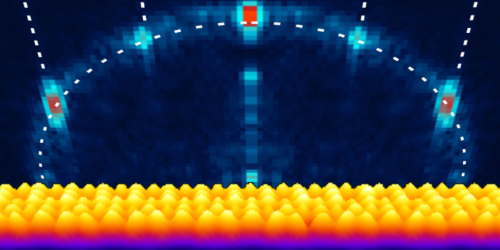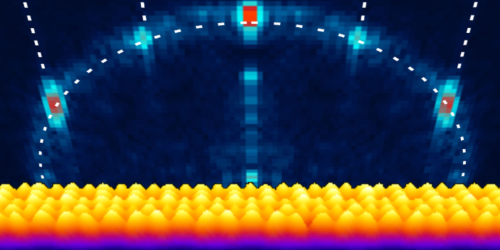Unconfined Electrons Exhibit Discrete Energy Levels
Nanostructures can be engineered such that quantum confinement permits only certain electron energy levels. A quantum well, for example, confines electrons between two interfaces and excludes all but a specific set of electron wavelengths. Now, Alberto Martín-Jiménez of IMDEA Nanoscience in Spain and colleagues have observed a pattern of discrete electron energies in an unconfined system, which could lead to new methods of nanofabrication and new ways to modify surface properties of materials.
While studying how surface electrons affect molecular adsorption, the team fabricated “islands” of an organic compound on a pristine copper surface. Examination with a scanning tunneling microscope revealed—surprisingly—a stable, standing-wave of electron density, signifying electrons with discrete energies, near each structure. Consisting of just a single linear barrier, the island edges were not expected to produce this effect—it was thought that, without quantum confinement, electrons should take on a continuous range of energies. The team deduced that the pattern was caused by interference between incoming electrons and those scattered from the island, which acted like a diffraction grating.
Since electron density controls the properties of a material’s surface, the team says that this work could provide a new way to influence phenomena such as surface chemical reactions, optical reflectivity, and electrical conductivity. Electron density also affects how atoms are adsorbed onto the surface, so nanofabrication techniques such as atomic layer deposition could be used to produce structures that mirror the periodicity of the underlying standing wave.
This research is published in Physical Review Letters.
–Marric Stephens
Marric Stephens is a freelance science writer based in Bristol, UK.





